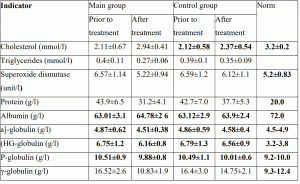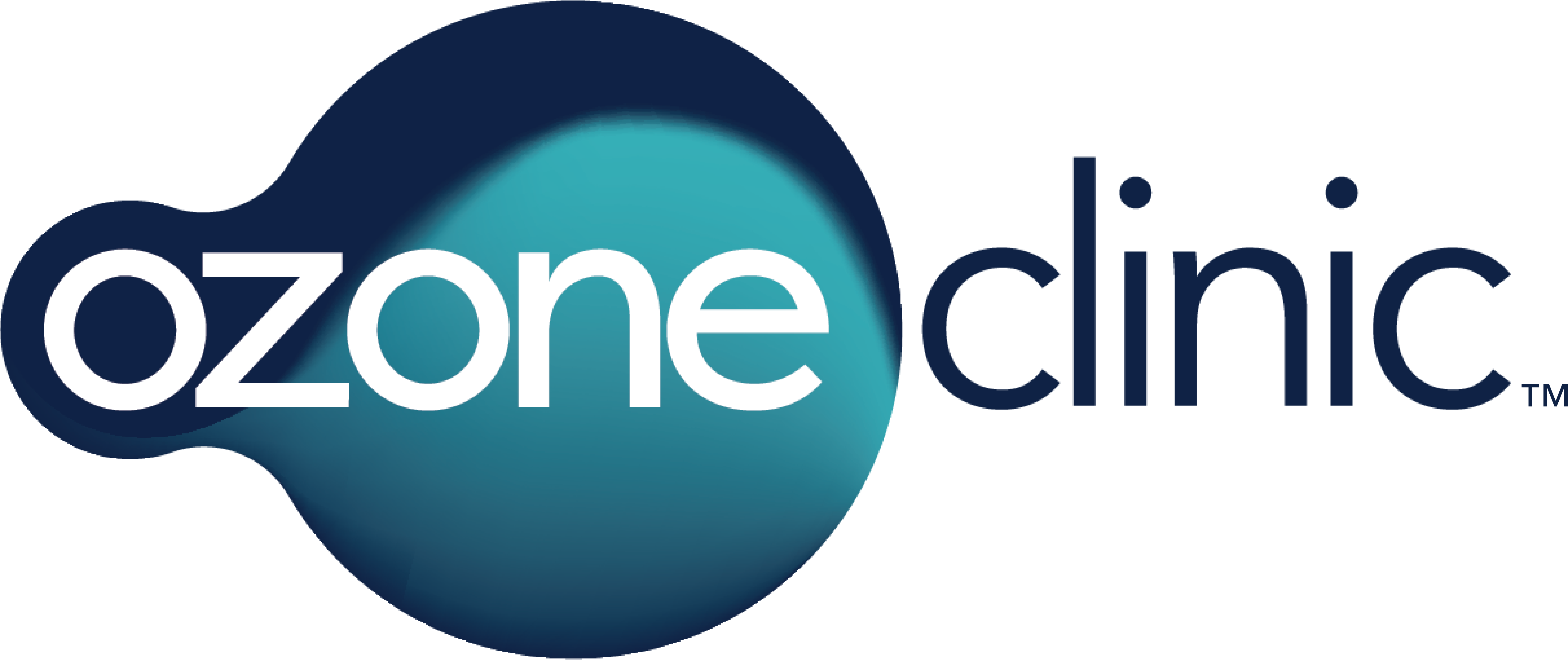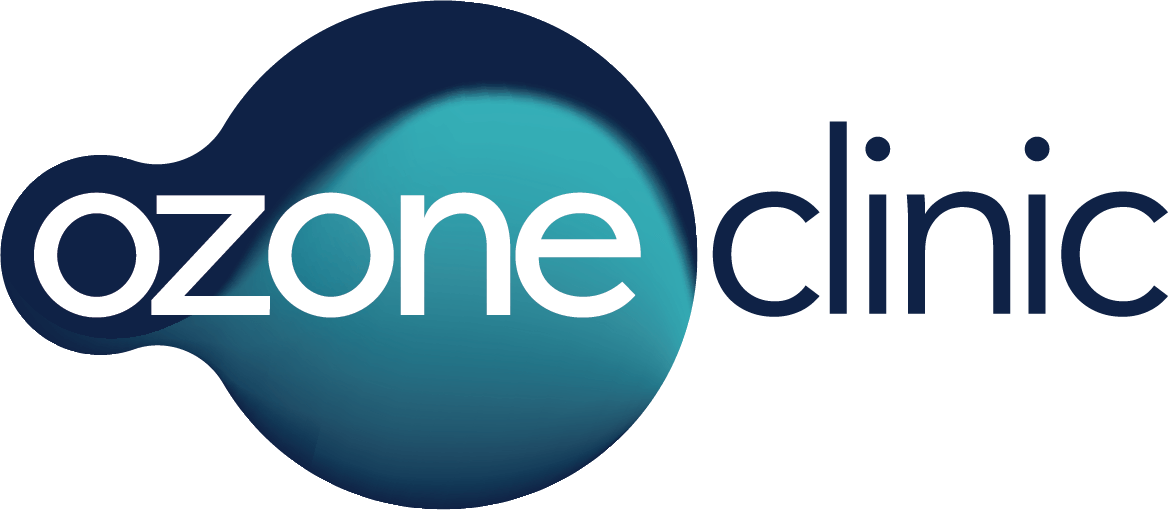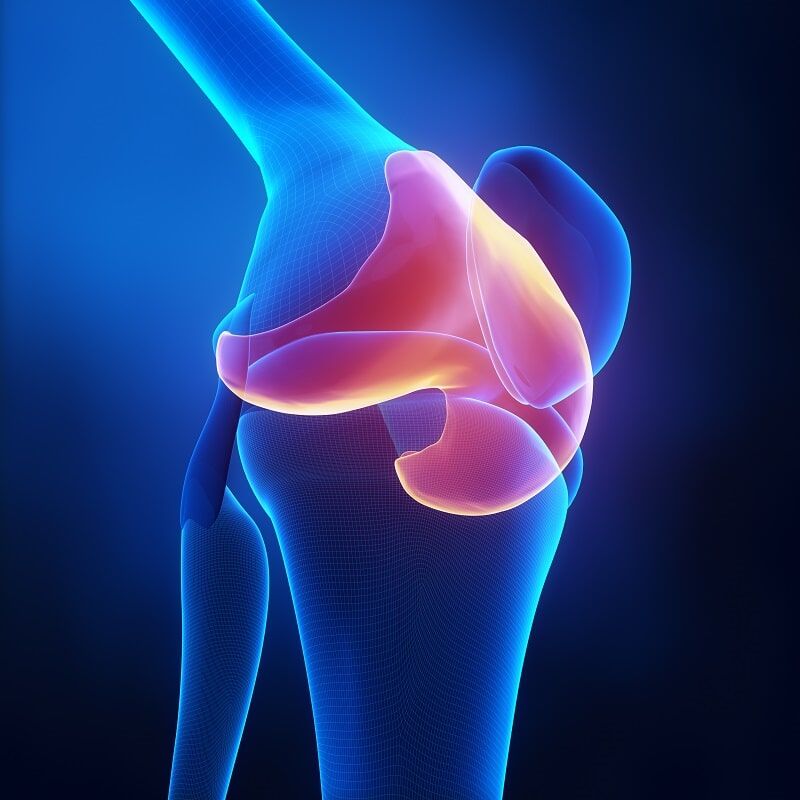APPLICATION OF OZONE THERAPY IN COMPLEX TREATMENT OF PATIENTS
WITH KNEE JOINT OSTEOARTHROSIS
E. Dulitsky
MD, PhD Medicine, Main place of work: Integrative Health Specialists, 77 Cecil Avenue,
Castle Hill, NSW, 2154, Australia
Keywords: knee joint, osteoarthrosis, ozone-oxygen mixture, chondroprotectors.
Published online: 06 June 2018
ABSTRACT
“Osteoarthritis is a common degenerative disease of joints. One of the new methods of
treatment is ozone application. In the paper results of ozone therapy application in complex
treatment of knee joint osteoarthrosis are described. It is demonstrated on the material of 150
patients with knee joint osteoarthrosis that complex treatment with the application of ozone
therapy is more effective than the use of chondroprotectors alone. Moreover, intraarticular injections of ozone-oxygen mixture are effective both immediately after and long after treatment. Physicochemical and biochemical properties of ozone allow treating this gas as a pharmacological agent and require compliance with the basic principles of pharmacotherapy both at the stage of production of ozone-oxygen mixture and during its intraarticular injection.” (1)
INTRODUCTION
“Osteoarthritis (OA) is the most common degenerative joint disease and a growing health problem affecting more than half of the population over the age of 65. OA is considered as one of the most common causes of disability affecting the joints. The treatment of injured articular cartilage is a major challenge to specialists because of its limited self-healing
capacity. Currently, there is no universally accepted successful treatment for injured articular
cartilage.” (1)
MATERIALS AND METHODS
“150 patients with knee joint osteoarthritis were examined and treated at the Department of Sports and Ballet Traumas. Among them, 66 (44{e43154ce913794517af217fcab284b44cfe906ba9a1c4ba2ecde5a9be0395ec5}) were males and 84 (56{e43154ce913794517af217fcab284b44cfe906ba9a1c4ba2ecde5a9be0395ec5}) females. The patients were aged 34 to 64. Osteoarthrosis was approximately the same frequency in the right and the left knee joints, and in 17 cases (11.3{e43154ce913794517af217fcab284b44cfe906ba9a1c4ba2ecde5a9be0395ec5}) of both knee joints. It should be noted that more than a half of patients before coming to the clinic received treatment at other medical institutions by physiobalneo-therapeutic and drug methods, intraarticular injections (hydrocortisone, diprospan, alflutop, target T, etc.). Because of frequent exacerbations or incomplete disappearance of the pain syndrome, the previous treatment of patients was assessed as ineffective.” (1)
All patients were into 2 groups:
main group – included 120 patients which received treatment with ozone therapy;
control group – included 30 patients which received traditional medicinal therapy.
Both groups were identical in the main clinical and x-ray characteristics.
“In both groups comprehensive treatment included chondroprotectors. To evaluate the KJ function in the treatment process of patients with OA, we used clinical methods: examination, palpation, measurement of the length of joint circumference and segments of the lower extremity, amplitude of passive and active motions, evaluation of motions, etc.; special clinical methods for detecting meniscus and ligament injuries, instability, functional deficiency of periarticular muscles; as well as instrumental: methods of
visual evaluation (ultrasonography, radiography, computer tomography, magnetic resonance imaging, photo rheoplethysmography and arthroscopy); methods of function evaluation: goniometry, electromiography, dynamometry, isometric and isokinetic testing, stabilometry. Biochemical studies of synovial fluid were performed.”(1)
(1) Dulitsky et al. J Fundam Appl Sci. 2018, 10(5S), 1171-1177 1173
To determine the objective data characterizing functional indicators of the knee joint,
hardware methods were used. We evaluated a number of indicators characterizing the
functional state of the knee joint using the isokinetic unit.As a method of OA treatment, we used the intraarticular injections of ozone-oxygen mixture.
In the work, we used “OP1-M” ozonizer designed and manufactured by the NGO “Orion”
exactly for ozone therapy.For studying the efficacy of ozone therapy in the treatment of knee joint osteoarthrosis, two
phases of clinical trials of ozone-oxygen mixture were performed. The 1st phase of clinical
trials was the study of direct effect of the procedure of intraarticular injection of gas into the
knee joint; the 2nd phase was the clinical study of the efficacy of ozone therapy in the main
group of patients.
EXPERIMENTAL
“Clinical efficiency of ozone therapy was evaluated in comparison with the traditional
medicinal treatment. 120 patients of the main group received 5 intraarticular injections each 2
– 3 days at a dose of 80 μg. At the same time, ZeelT (2 ml) were injected into the joint for
post-traumatic deforming OA. For patients with OA without deformations visible on X-ray
images Arterapon (1 ml) was used. 30 patients of the control group (n=30) received
interarticular chondroprotectors only. Background treatment (non-steroidal anti-inflammatory drugs, symptomatic drugs, exercise therapy) was also used in both groups.” (1)
RESULTS AND DISCUSSION
“The main complaint of patients before the beginning of treatment was a pain in the area of
affected joints of different intensity appearing on activity (especially when walking up and/or
down the stairs, sometimes when standing); in several patients – persisting at rest. In the main
group pain decreased after 2 injections of ozone-oxygen mixture during 6-9 days; in the
control group – after 12-15 days. This allowed taking more active treatment measures
(therapeutic exercise, massage) aimed at strengthening periarticular muscles and increasing
the KJ motion range in the main group. As a result dynamics of motion range in the main
group was restored after 3 weeks; but in the control group – after 5 weeks.
Among patients of the main group who received 4-5 injections of ozone-oxygen mixture, in
84{e43154ce913794517af217fcab284b44cfe906ba9a1c4ba2ecde5a9be0395ec5} clinical manifestations of reactive synovitis disappeared, and in 72{e43154ce913794517af217fcab284b44cfe906ba9a1c4ba2ecde5a9be0395ec5} the KJ motion
range increased. Degree of changes in the main clinical parameters in the control group of patients were less pronounced: only in 1/3 of patients synovitis became less pronounced; in
none of the patients it disappeared.
To assess the molecular-cellular effect of ozone-oxygen mixture on the KJ tissue, synovial
fluid was studied in 44 patients of the main group and 18 patients of the control group. The
material was taken prior to treatment and 4 weeks later. A number of indicators were assessed
in synovial fluid: the content of cholesterol, triglycerides (lipids), superoxide dismutase, the content
of protein and its fractions.
Cholesterol content in synovial fluid of the KJ of patients of the main and control groups was
low prior to treatment. After treatment, it increased in both groups, but more significantly in
the main group – by 39.3{e43154ce913794517af217fcab284b44cfe906ba9a1c4ba2ecde5a9be0395ec5} (vs by 11.8{e43154ce913794517af217fcab284b44cfe906ba9a1c4ba2ecde5a9be0395ec5} in the control group (p>0.05). Increase in cholesterol
content is regarded as evidence of lipid metabolism normalization as ozone treatment effect.
There was no decrease in the number of triglycerides in synovial fluid in the control group
after treatment, whereas in the main group their content decreased by 32.5{e43154ce913794517af217fcab284b44cfe906ba9a1c4ba2ecde5a9be0395ec5} (p<0.05). We
attributed this fact to the direct effect of ozone on unsaturated fatty acids of triglycerides.
We have recorded a high level of enzyme of antioxidant activity and antiradical protection of
cells – superoxide dismutase, both in the control and in the main groups. As a result of
treatment, this indicator significantly decreased in the main group by 25.5{e43154ce913794517af217fcab284b44cfe906ba9a1c4ba2ecde5a9be0395ec5} (p<0.05)
and to a lesser extent in the control group (by 7.2{e43154ce913794517af217fcab284b44cfe906ba9a1c4ba2ecde5a9be0395ec5}). This fact confirms the antioxidant properties
of ozone.
In our work, there was a more than 2-fold increase of total protein concentration, decrease in
the share of albumins by 11-12{e43154ce913794517af217fcab284b44cfe906ba9a1c4ba2ecde5a9be0395ec5}, increase in the content of globulins mainly at the expense of
α2- and γ-globulins, which can be attributed to chronic inflammation of joint tissues. After
treatment, the tendency towards normalization of synovial fluid protein composition was
determined. It was more pronounced in the main group, but it was much slower vs decreasing
of clinical manifestations of the inflammatory process in the joint. Thus, protein in the main
group significantly decreased by 29{e43154ce913794517af217fcab284b44cfe906ba9a1c4ba2ecde5a9be0395ec5} (p<0.05); in the control only by 11.7{e43154ce913794517af217fcab284b44cfe906ba9a1c4ba2ecde5a9be0395ec5} (p<0.05); γglobulins, by 34.4{e43154ce913794517af217fcab284b44cfe906ba9a1c4ba2ecde5a9be0395ec5} and 10.1{e43154ce913794517af217fcab284b44cfe906ba9a1c4ba2ecde5a9be0395ec5}, respectively (p<0.05); (α2-globulins by 8.3{e43154ce913794517af217fcab284b44cfe906ba9a1c4ba2ecde5a9be0395ec5} and 3.4{e43154ce913794517af217fcab284b44cfe906ba9a1c4ba2ecde5a9be0395ec5}
(p>0.05); there was an insignificant increase of albumins and a decrease of α1- и β-globulins.
From our point of view, these changes of protein in synovial fluid testify to
immunomodulating and anti-inflammatory features of ozone.
The parameters to be considered and their values are given in Table 1.

(1) E. Dulitsky et al. J Fundam Appl Sci. 2018, 10(5S), 1171-1177 1174
To evaluate the efficacy of treatment on the basis of clinical methods of study, we used the
scale designed for the assessment of the efficacy of the functional treatment of injuries of
capsular ligamentous elements of knee joints by M.B. Tsykunov. Pain in the KJ is one of the
main clinical characteristics in evaluating the results of OA treatment. In our studies, after the
course of ozone therapy, pain intensity decreased in all patients; in addition, its character
changed, which points to treatment efficacy. The number of patients who had no pain
syndrome after treatment was 61.6{e43154ce913794517af217fcab284b44cfe906ba9a1c4ba2ecde5a9be0395ec5}, whereas, before treatment, all the patients had pain. The gain
in weighted average score was 1.42. Effusion in the joint after treatment appeared
periodically, mainly after physical exertion and stopped after treatment in 5{e43154ce913794517af217fcab284b44cfe906ba9a1c4ba2ecde5a9be0395ec5} of patients
versus 25{e43154ce913794517af217fcab284b44cfe906ba9a1c4ba2ecde5a9be0395ec5} prior to treatment. It was absent in the absolute majority of patients – 82.5{e43154ce913794517af217fcab284b44cfe906ba9a1c4ba2ecde5a9be0395ec5}. The gain
in weighted average score was 1.24. Supportability of the affected leg after treatment was
completely restored in 45{e43154ce913794517af217fcab284b44cfe906ba9a1c4ba2ecde5a9be0395ec5} of patients. The gain in weighted average score was 0.76. More than
half of patients had no lameness after treatment. The gain in weighted average score was 1.44.
Limitation of the possibility of walking over long distances after treatment was recorded in
17.5{e43154ce913794517af217fcab284b44cfe906ba9a1c4ba2ecde5a9be0395ec5} of patients, while before treatment this indicator was recorded in 40{e43154ce913794517af217fcab284b44cfe906ba9a1c4ba2ecde5a9be0395ec5} of patients. The gain
in weighted average score was 1.63. Running and jumping after treatment is possible in
more than half of observations, while before treatment – only in 17.5{e43154ce913794517af217fcab284b44cfe906ba9a1c4ba2ecde5a9be0395ec5}. Gain in weighted
Table 1. Results of biochemical analysis of synovial fluid
(M ± m) (highlighted values – differences are significant, p<0.05).
The average score was 1.27. The complaint about the difficulty of climbing the stairs characteristic of the
KJ OA, after treatment, was absent in 66.6{e43154ce913794517af217fcab284b44cfe906ba9a1c4ba2ecde5a9be0395ec5} of patients; 27.6{e43154ce913794517af217fcab284b44cfe906ba9a1c4ba2ecde5a9be0395ec5} of patients noted minor
difficulties. Gain in weighted average score for this indicator was 1.33. The gain in the weighted
average final score for different locomotions was 1.41. Length of thigh circumference, which
characterizes muscle hypotrophy, after treatment increased in almost all patients. Pronounced
muscle hypotrophy prior to treatment was recorded in 25.8{e43154ce913794517af217fcab284b44cfe906ba9a1c4ba2ecde5a9be0395ec5} of patients; after treatment, only
in 6.7{e43154ce913794517af217fcab284b44cfe906ba9a1c4ba2ecde5a9be0395ec5}. The gain in weighted average score was 1.37.
Prior to treatment, there were no significant differences in the majority of the investigated
indicators between the groups (p>0.05), and the integral indicator of the functional state of the
affected KJ is below 3 points, which testifies to the state of decompensation. Soon after
treatment (1.5 months), the integral indicator in the main group was 4.39 ± 0.18 points. This is
0.18 points (p<0.05) higher than in the control group. Both in the main and control group, the
integral indicator in the long-term period remained at a rather high level. In the main group, it
was equal to 4.27 ± 0.16 points, and in the control group – 3.96 ± 0.28 points (p> 0.05).
CONCLUSIONS
1. Physicochemical and biochemical properties of ozone allow treating this gas as a
pharmacological agent and require compliance with the basic principles of pharmacotherapy
both at the stage of production of ozone-oxygen mixture and during its intraarticular injection.
2. Use of ozone therapy in combination treatment of patients with the knee joint osteoarthrosis promotes a faster decrease in the pain syndrome intensity (6-9 days versus 12-
15 in the control group) and restoration of the knee joint motion range (3 weeks versus 5
weeks in the control group), which shows up in changes in synovial fluid – a decrease in the
content of inflammatory proteins: basic protein by 29{e43154ce913794517af217fcab284b44cfe906ba9a1c4ba2ecde5a9be0395ec5} (in control – by 11.7{e43154ce913794517af217fcab284b44cfe906ba9a1c4ba2ecde5a9be0395ec5}); γ-globulins,
by 34.4{e43154ce913794517af217fcab284b44cfe906ba9a1c4ba2ecde5a9be0395ec5} (10.1{e43154ce913794517af217fcab284b44cfe906ba9a1c4ba2ecde5a9be0395ec5} in control), α2-globulins by 8.3{e43154ce913794517af217fcab284b44cfe906ba9a1c4ba2ecde5a9be0395ec5} (3.4{e43154ce913794517af217fcab284b44cfe906ba9a1c4ba2ecde5a9be0395ec5} in control).
3. Protracted intraarticular injection of ozone-oxygen mixture in the treatment of the knee
joint osteoarthrosis leads to activation of antioxidant protection, which shows up in a decrease
in superoxide dismutase content in synovial fluid by 25.5{e43154ce913794517af217fcab284b44cfe906ba9a1c4ba2ecde5a9be0395ec5}, whereas in the control group this
indicator decreases by 7.2{e43154ce913794517af217fcab284b44cfe906ba9a1c4ba2ecde5a9be0395ec5}.
4. Use of ozone therapy in complex treatment of patients with the knee joint osteoarthrosis
has a beneficial effect on the processes of normalizing lipid metabolism in joint tissues, which
shows up in increasing cholesterol content in synovial fluid by 39.9{e43154ce913794517af217fcab284b44cfe906ba9a1c4ba2ecde5a9be0395ec5} (in the control group,
by 11.8{e43154ce913794517af217fcab284b44cfe906ba9a1c4ba2ecde5a9be0395ec5}) and a decrease in the content of triglycerides by 32.5{e43154ce913794517af217fcab284b44cfe906ba9a1c4ba2ecde5a9be0395ec5} in the absence of dynamics
of this indicator in the control group.
5. Complex treatment with the use of ozone therapy promotes compensation of the
functional state of the knee joint in case of osteoarthrosis and an increase in integral indicator
from the initial 3.0 to 4.39 points in the nearest future, to 4.27 – in the long term period. The
use of chondroprotectors alone improves the knee joint but to a lesser extent.
Sources
1. E. Dulitsky et al. J Fundam Appl Sci. 2018, 10(5S), 1171-1177 1174
2. Borrelli E., Alexandre A., Illiakis E., Alexandre A., Bocci V. Disc herniation and
knee arthritis as chronic oxidative stress diseases: the therapeutic role of oxygen-ozone
therapy J. Arthritis 2015; 4: 1-7
3. Calunga J.L.,Silvia M., Rodolfo L., Soulien C., Dailen G., Alberto B. Application of
Ozone Therapy in Patients with Knee Osteoarthritis The Journal of the International Ozone
Association 2012; 34: 469-475
4. Musumeci G., Aillo F.C. , Szychlinska M.A. , Di Rosa M., Castrogiovanni
P., Mobasheri A. Osteoarthritis in the XXIst century: risk factors and behaviours that
influence disease onset and progression Int. J. Mol. Sci. 2015; 16: 6093-6112
5. Rambani R., Venkatesh R. Current concepts in articular cartilage repair J. Arthrosc.
Joint Surg 2014; 1: 59-65





